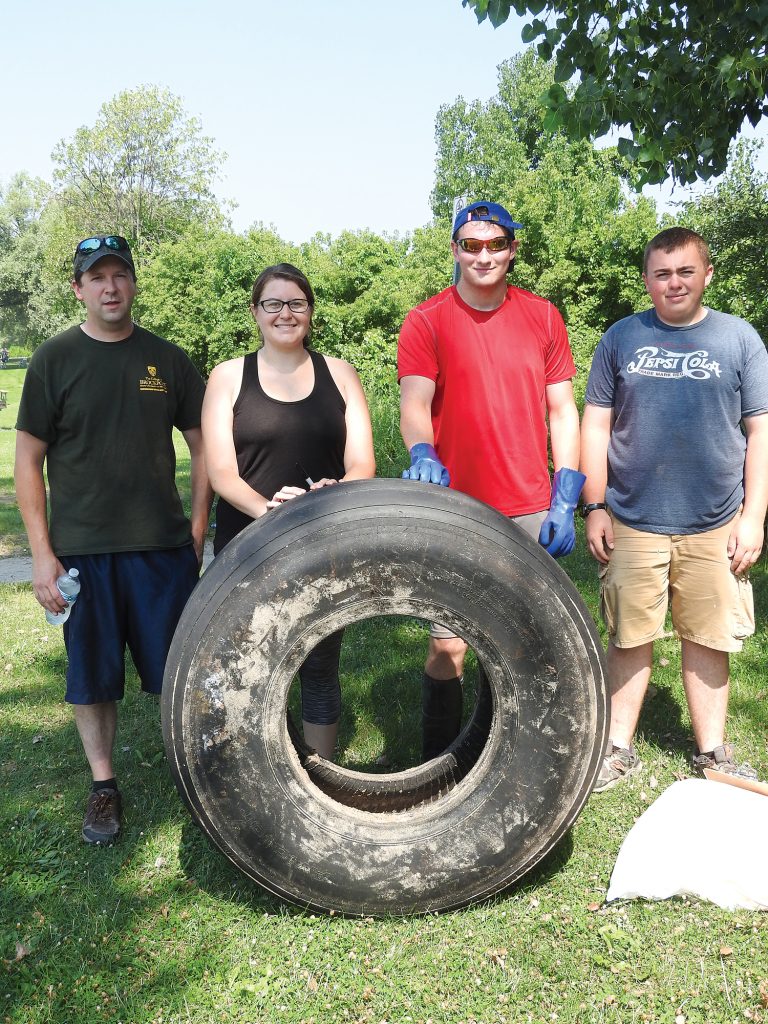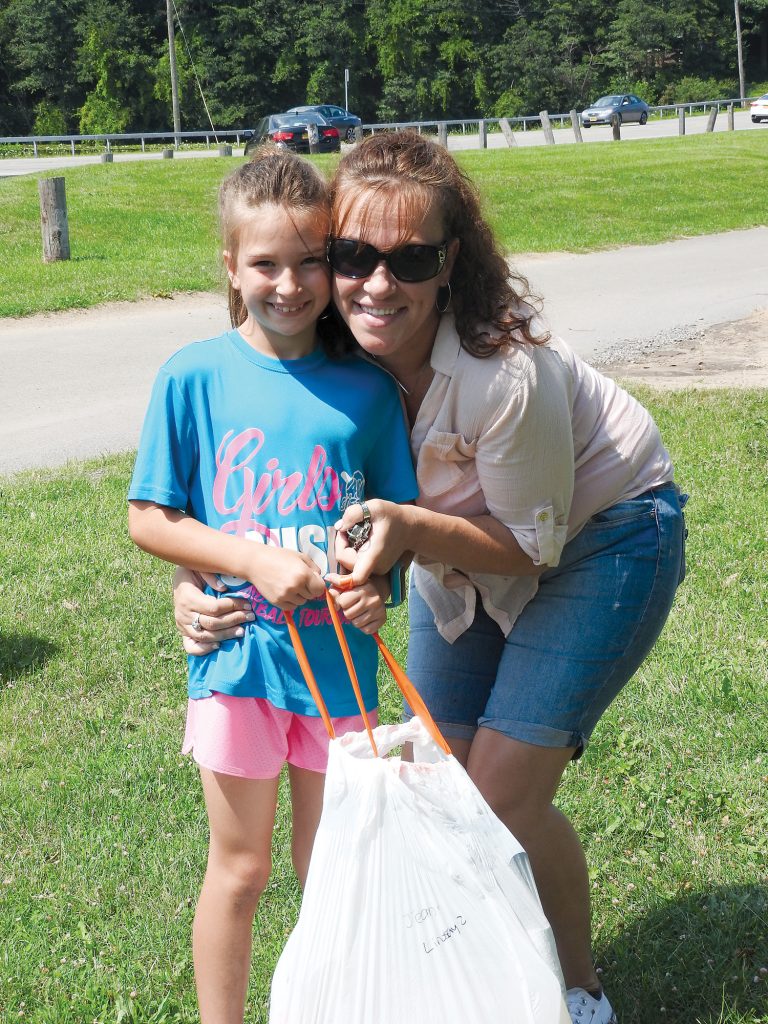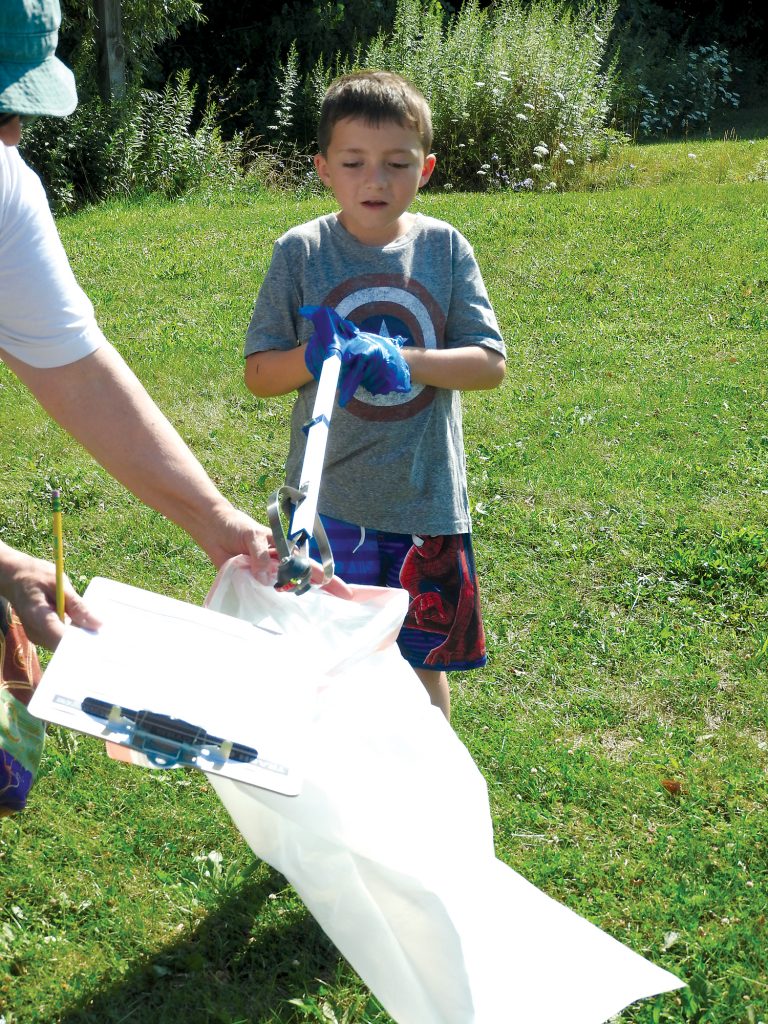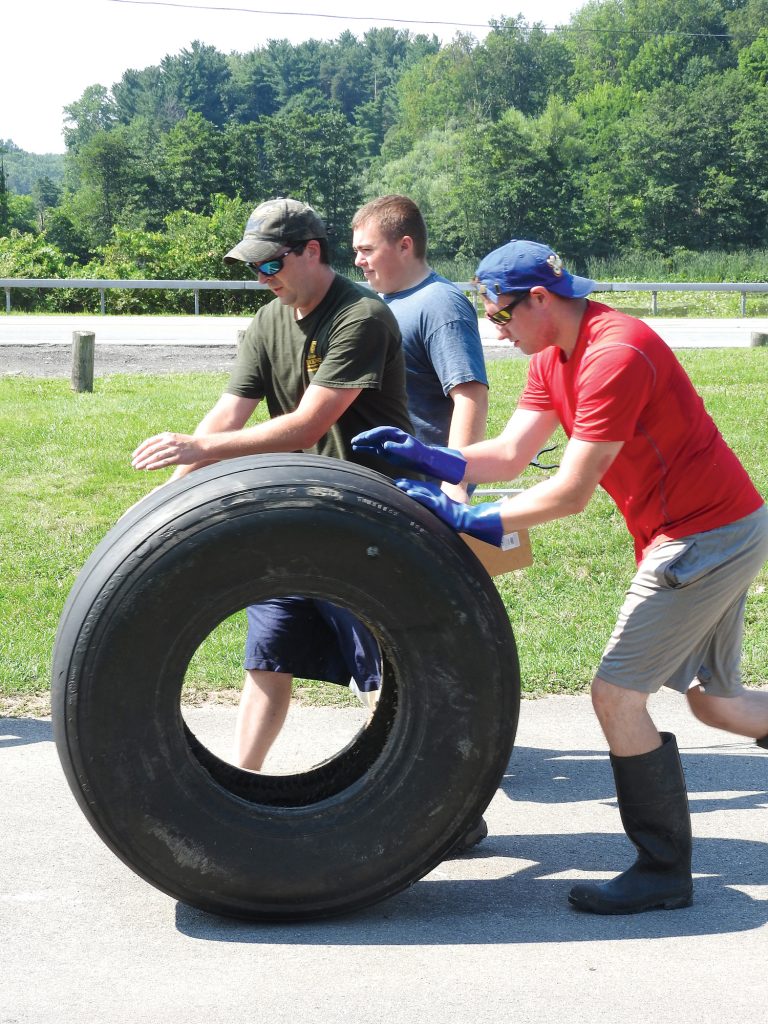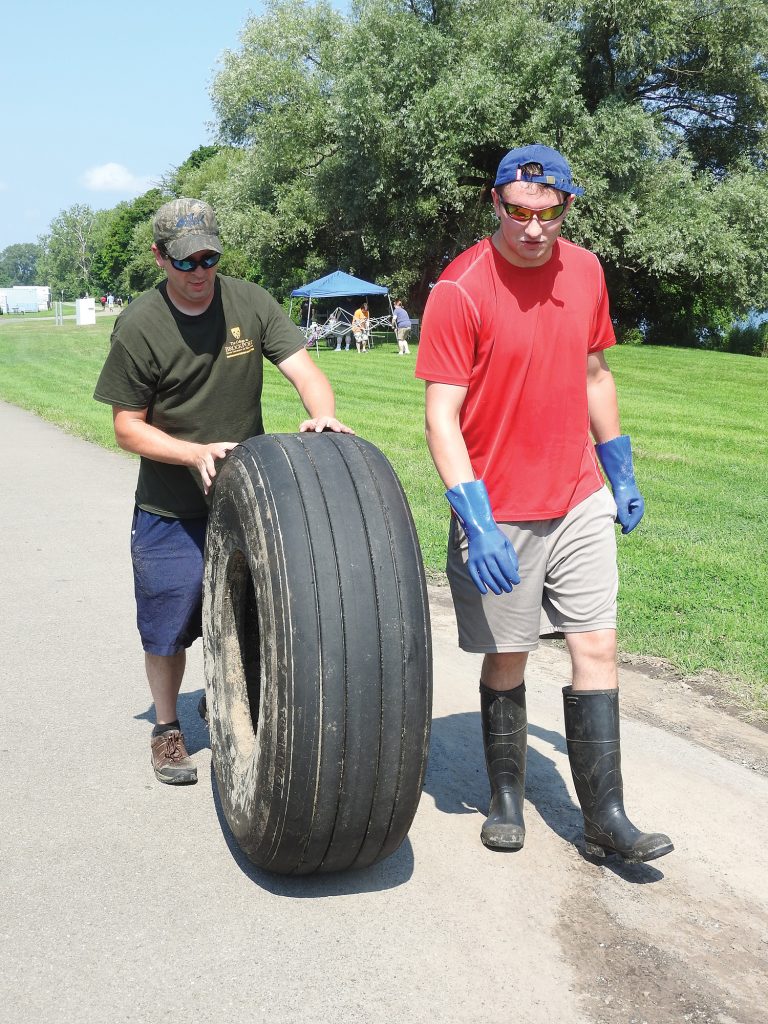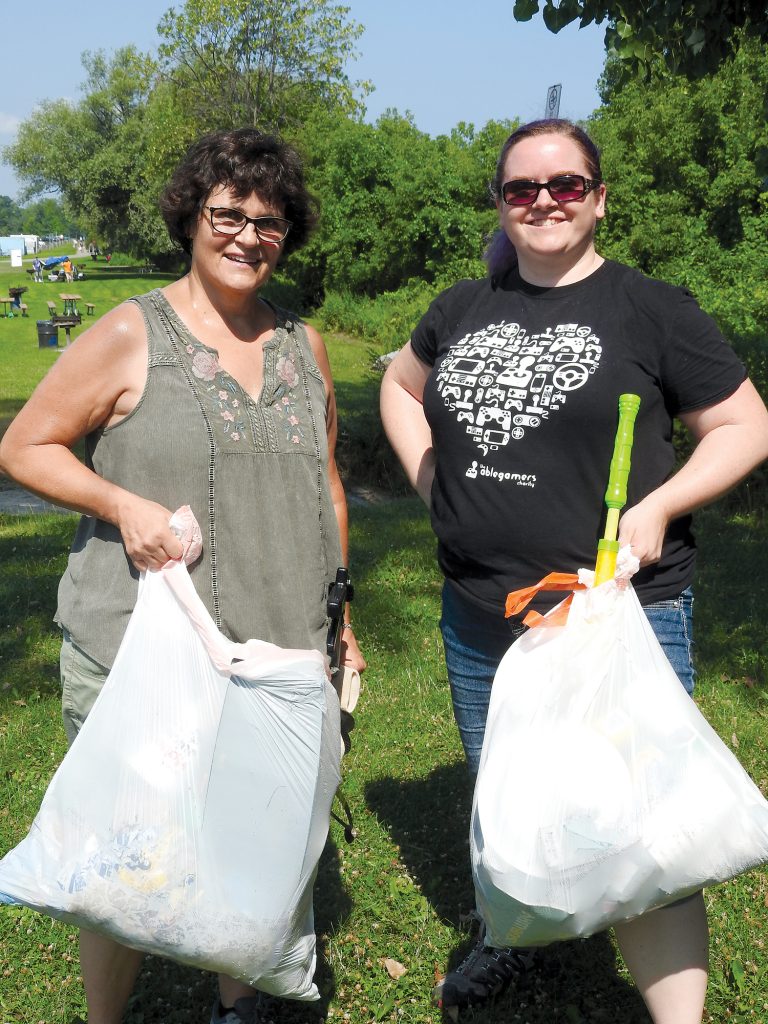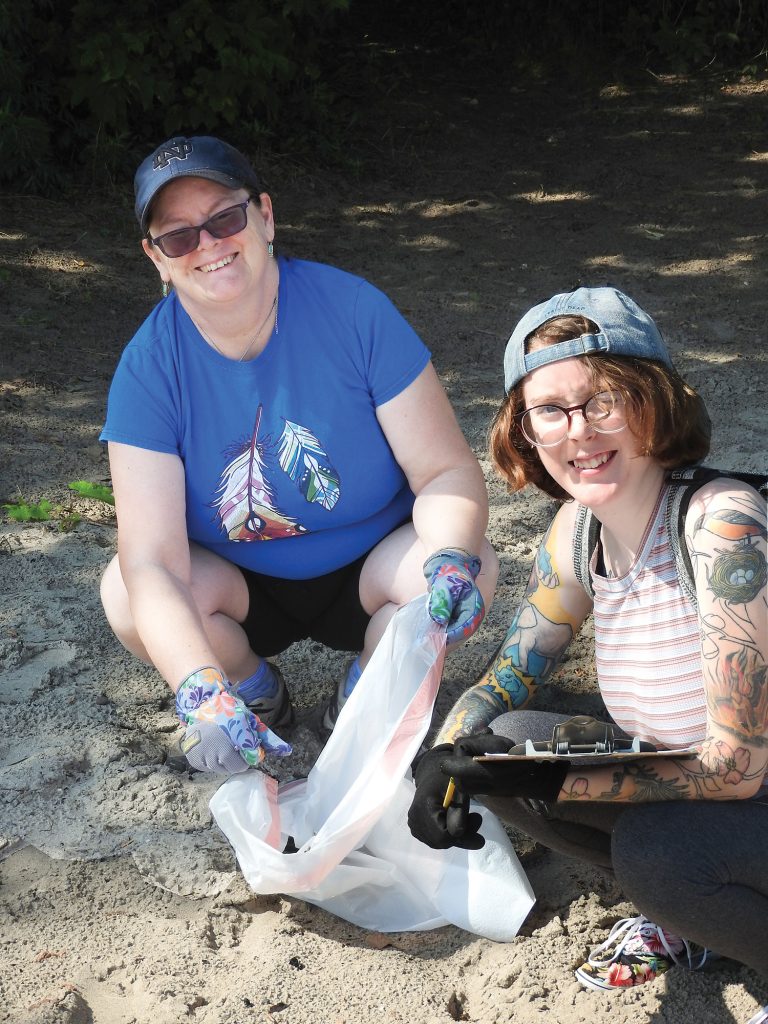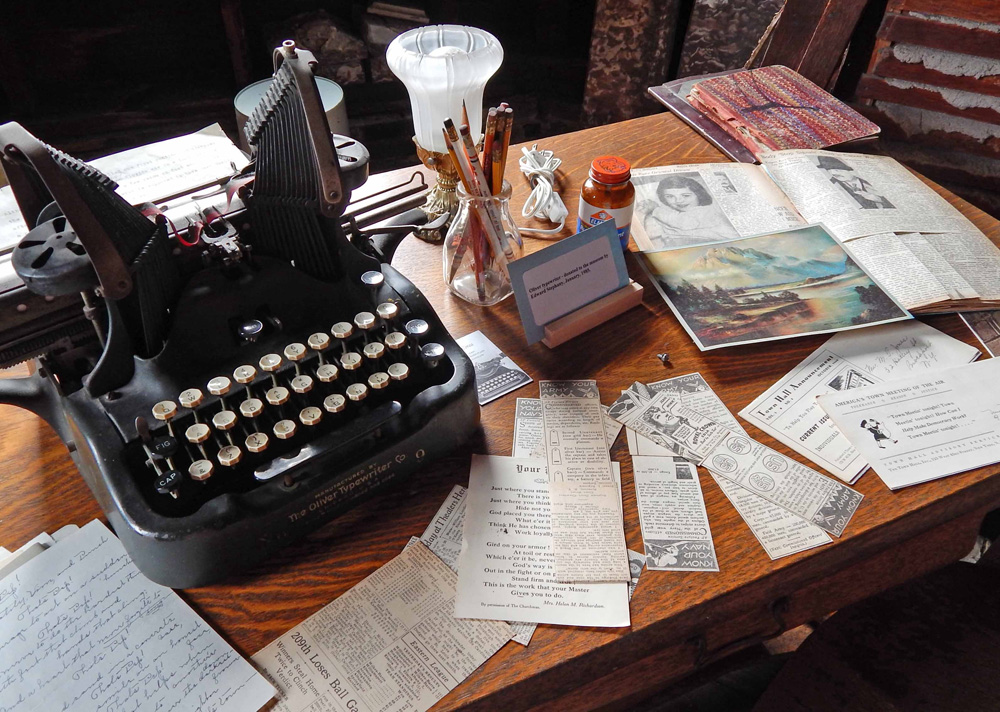Protecting our Great Lakes
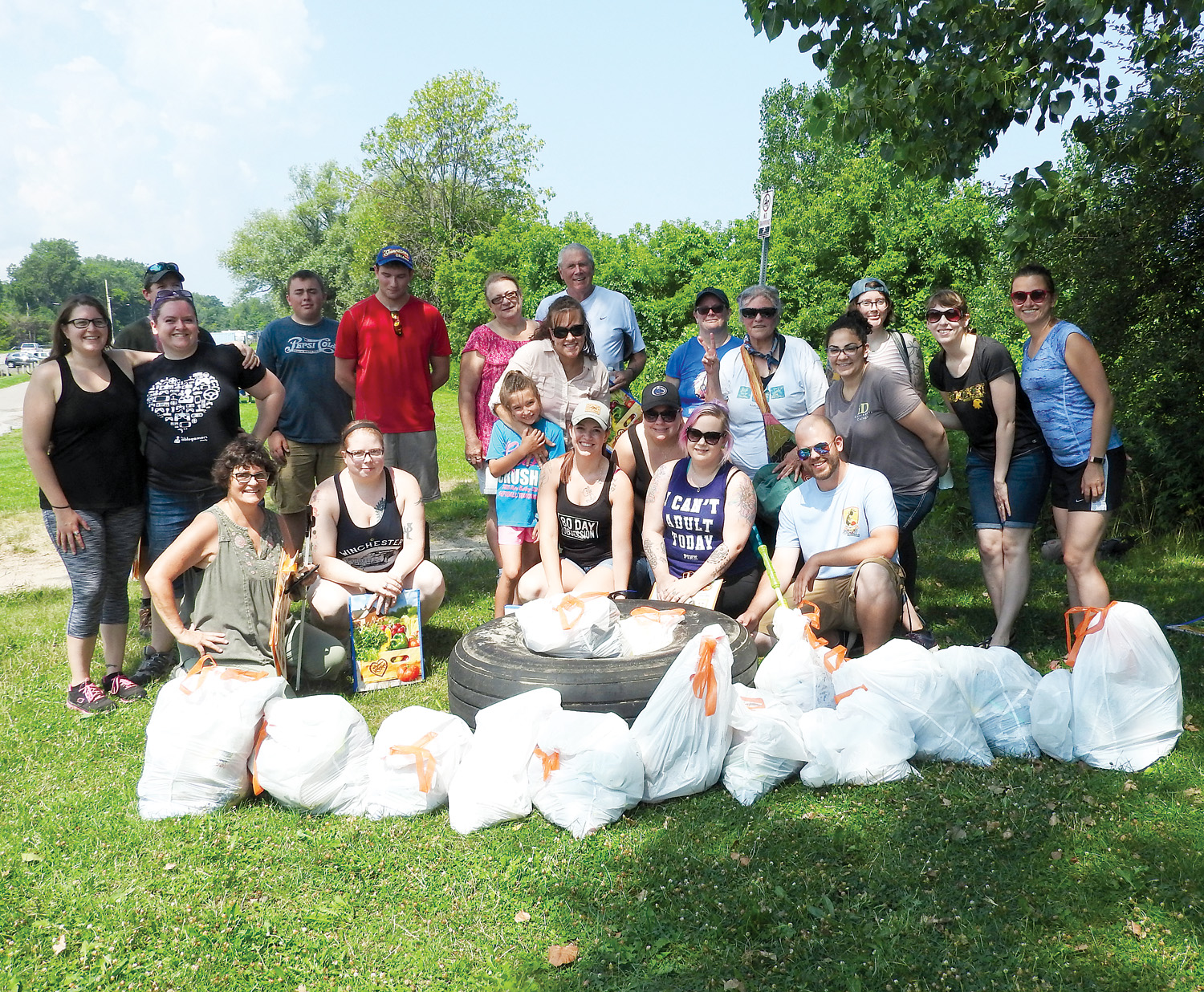
Greece woman forms
the Plastic Lakes Project
Tammy Bleier, a Greece Arcadia High School graduate, loves the water, she has ever since she was a baby. Growing up in Greece, she had constant exposure to Lake Ontario, Ontario Beach Park and Keuka Lake, where she vacationed with her family every summer. Bleier says, “I grew up a short five minute drive from Ontario Beach Park. When I got my first car I would drive to the beach and along Edgemere Drive, it was my happy place. I walked the beaches all the time. The lake was my place for recreation and relaxation. I don’t remember seeing much pollution then, now we are in the midst of a crisis.”
Bleier formed the Plastic Lakes Project in Spring 2018 with the goal to research and combat plastics in the Great Lakes. It is an offshoot of Plastic Ocean Project (POP), an organization that Bleier got involved with while studying at the University of North Carolina Wilmington. She graduated from UNCW with a bachelor of science in Marine Biology in 2014. While volunteering with POP and working on the plastics problem in the oceans, Bleier discovered that three million pounds of plastics were entering Lake Ontario every year. That is when she decided to get involved in the plastic problem that was happening right in her hometown.
The goal of Plastic Lakes Project is to research, educate and combat plastic pollution in the Great Lakes. Bleier started going to events at the Alliance for the Great Lakes, an organization founded in the 70s with a goal of “protecting the Great Lakes for today and tomorrow.” “I wanted to find out what is going on with the plastics problem right here in our community. I found that a lot of the plastics in the lake get washed up onto the shore. The debris is spread out and it is hard to track. The plastic in the lake breaks down into micro plastics and they can’t be seen, unlike in the oceans where large areas of plastic are seen floating on the surface. The micro plastics in the lake sink to the floor of the lake where fish and wildlife feed. The plastic problem in our Great Lakes is insidious, you can’t see the problem. In the oceans, photos are available that show the large areas of plastic debris,” Bleier said.
Why is Plastic Lakes Project so important? According to their website, “Three million pounds of plastic ends up in Lake Ontario each year. That’s enough plastic waste to fill 28 Olympic-sized swimming pools. While studies are emerging on plastic pollution in the Great Lakes, very few include research on Lake Ontario. Plastic Lakes Project is therefore focusing here first, as Lake Ontario is very unique. The other four Great Lakes eventually flow into Lake Ontario, making it the most vulnerable to plastic pollution. The highest count was outside of Toronto, with 3.4 million pieces found in one square mile. What’s more is that Lake Ontario is the last Great Lake before the St. Lawrence River, which empties into the ocean at the Gulf of St. Lawrence. Everything is connected. A majority of plastic waste comes from densely populated cities, like Chicago, Toronto, Cleveland and Detroit, as well as runoff from agricultural fields, recreation, and shipping. Unlike marine plastics that tend to move towards large, central, ocean gyres at the surface, lake plastics are often taken to shore by wind and currents. Of the litter that washes ashore, roughly 80 percent is plastic debris. Plastic takes hundreds of years to decompose, meaning it will remain in the ecosystem far beyond our lifetimes.”
Since forming Plastic Lakes Project, Bleier has held monthly beach cleanups. The objective of the cleanups is to not only pick up plastics along the beach which will eventually go back into the lake, but to also educate on the problem of single use plastics and to bring awareness to the alternatives. Bleier’s first cleanup was held in May and she did it on her own. In June she was joined by family and friends and through the use of social media the July and August cleanups were attended by 20 to 25 individuals at each event.
During the cleanup, items are collected, logged and carefully counted. Bleier uses the data in her research work. To date, in the June, July and August cleanups 10,000 total items have been collected and 483 pounds of trash has been diverted from littering Lake Ontario. The top items collected have been right in line in all three cleanups; cigarette butts, plastic pieces and food wrappers. In total 79 percent of what was collected was plastic or had plastic components. “Every little bit helps, and every individual can make a difference, my heart is so full and I am so thankful for the response from the community and all of the caring individuals who come out to support this project. The reception has been overwhelming. It really gives you hope,” Bleier said.
Bleier is currently working on her masters degree at The College at Brockport studying Environmental Science and Ecology. She is also working to have cigarette receptacles placed in public areas as a part of the Keep America Beautiful Project, a non-profit organization that educates about ending littering, improving recycling and beautifying communities. Cigarette butts are the number one item picked up during beach cleanups.
Another of Bleier’s current projects is working on a program to present to students K-12 on awareness of plastics and ways to reduce single use plastics and to introduce sustainable, long-term alternatives for use in daily living. She also wants to convey the fact that recycling is important, but it is not enough. Bleier will share the awareness of the role the Great Lakes play in our lives and our region’s ecology, not only for recreational uses but also for our drinking water and food and the importance of keeping the lakes clean for all generations of wildlife and the millions of people that depend on our lakes.
Upcoming Fall Plastic Lakes Project cleanups are scheduled for September 8 at Turning Point Park, 260 Boxart Street in Rochester and on October 6 at Ontario Beach Park, 50 Beach Avenue, Rochester. Cleanups start at 10 a.m. and wrap up at noon with a debris weigh in and group photo. There is a role for everyone that wants to participate. Volunteers are broken up into groups of three to four people and each member is assigned a job. Jobs include logging information on data sheets, carrying the bag and picking up debris. After each cleanup, Bleier goes through the individual bags of garbage to log the data, 60 percent of the debris picked up can be recycled, the other 40 percent is disposed of properly.
To learn more about Plastic Lakes Project or to volunteer for a cleanup, visit www.plasticlakesproject.org.
Photos by Karen Fien
